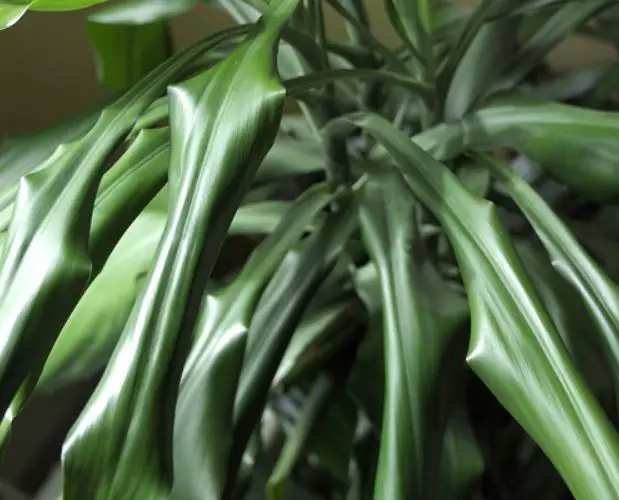Why Do Dracaena Leaves Curl? 12 Reasons For Dracaena Curling Leaves

Dracaena plants, with their striking foliage and easy-care nature, have secured a special place in the hearts of indoor plant enthusiasts. But what happens when those elegant leaves start to curl? Don’t panic! We’ve got you covered with this comprehensive guide on the perplexing issue of Dracaena curling leaves.
Summary About Dracaena Leaves Curl
| Factor | Impact on Leaves | Solution |
|---|---|---|
| Overwatering | Curling, Yellowing | Check soil before watering |
| Underwatering | Curling, Dry and Brown | Maintain a regular watering schedule |
| Low Humidity | Curling | Mist regularly or use a pebble tray |
| Too Much Sun | Curling, Browning | Provide bright, indirect light |
| Not Enough Sun | Curling, Pale and Leggy | Relocate to a sunnier spot |
| Pests and Diseases | Curling | Inspect and treat accordingly |
| Fertilizer Burn | Curling, Browning | Follow fertilizer instructions |
| Cold Temperatures | Curling, Browning | Protect from cold, bring indoors |
| Chemical Damage | Curling, Browning | Keep away from chemicals |
| Transplant Shock | Curling, Yellowing | Post-transplant care is crucial |
| Rootbound | Curling, Yellowing | Repot in a larger pot every 1-2 years |
| Old Age | Natural leaf loss | Accept it as part of the plant’s life |
In this article, we’ll explore the 12 common culprits behind this foliage conundrum and offer practical solutions to ensure your Dracaena thrives. So, whether you’re a seasoned plant parent or just starting your green journey, read on to discover why Dracaena leaves curl and how to keep them looking their best.
12 Reasons for Dracaena Curling Leaves
1. Overwatering
Problem: Like all living things, Dracaenas appreciate a little moderation. If you shower them with too much love in the form of water, their leaves can start curling and turning yellow.
Solution: Check the soil’s top inch or two before watering. Only hydrate your Dracaena when it’s feeling a bit parched.
2. Underwatering
Problem: On the flip side, neglecting your Dracaena can lead to curling leaves, which will be dry and brown rather than yellow.
Solution: Make watering a routine. Your Dracaena deserves a consistent hydration schedule, but remember not to go overboard.
3. Low Humidity
Problem: Dracaenas are tropical plants that thrive in humid environments. When the air in your home is too dry, their leaves might curl in protest.
Solution: Boost humidity by misting your Dracaena regularly or placing it on a pebble tray filled with water for a mini spa day.
4. Too Much Sun
Problem: If your Dracaena is sunbathing too much, its leaves can curl and develop unsightly brown spots, akin to a sunburn.
Solution: Find a cozy spot with bright, indirect light for your plant to soak in. Your Dracaena will appreciate the shade.
5. Not Enough Sun
Problem: Conversely, if your Dracaena is yearning for more light, its leaves will curl and its appearance may become pale and leggy.
Solution: Relocate it to a sunnier spot with the right balance of indirect light to keep those leaves happy.
6. Pests and Diseases
Problem: Tiny invaders like spider mites, mealybugs, and scale can inflict curling leaves on your Dracaena. Additionally, diseases like root rot and leaf spot can wreak havoc.
Solution: Inspect your plant for any unwanted guests regularly. If you spot any, take action swiftly with the appropriate treatment.
7. Fertilizer Burn
Problem: Too much of a good thing can be bad. Over-fertilizing your Dracaena can lead to curling leaves and a not-so-flattering shade of brown.
Solution: Follow the fertilizer’s instructions meticulously. Your Dracaena will appreciate a balanced diet.
8. Cold Temperatures
Problem: Dracaena plants are cold-phobic. Exposure to chilly weather can result in those dreaded curling leaves turning brown.
Solution: Give your plant a warm hug by bringing it indoors during the winter or placing it in a sheltered outdoor spot.
9. Chemical Damage
Problem: The sensitive nature of Dracaenas makes them susceptible to chemicals like herbicides or pesticides. Such exposure can cause leaves to curl and brown.
Solution: Keep your Dracaena well away from any chemical encounters, protecting its delicate disposition.
10. Transplant Shock
Problem: Transplanting can be a stressful experience for your Dracaena, leading to curling and yellowing leaves as a sign of protest.
Solution: Show your plant some extra TLC by maintaining consistent watering and a cozy, humid environment post-transplant.
11. Rootbound
Problem: If your Dracaena outgrows its pot and becomes rootbound, it can suffer from curled and yellow leaves.
Solution: Give your Dracaena some room to stretch by transplanting it into a larger pot every year or two.
12. Old Age
Problem: Just like us, Dracaenas age gracefully. As they grow older, their lower leaves might naturally curl and drop off, leaving a trail of nostalgia behind.
Solution: Accept that some leaf loss is a part of the circle of plant life and focus on pampering the new growth.
FAQs: Solving the Dracaena Curling Leaves Mystery
Q1: Can I revive my Dracaena if its leaves have already curled?
A1: Yes, you can! Identifying and correcting the underlying issue is key. With proper care and attention, your Dracaena can bounce back, and new leaves will grow in a healthier state.
Q2: How can I check if my Dracaena needs water without digging my fingers into the soil?
A2: Invest in a moisture meter, a nifty gadget that measures soil moisture accurately without getting your hands dirty. It’s a handy tool for any plant parent.
Q3: What’s the ideal humidity level for Dracaenas?
A3: Aim for a humidity level of around 40-60% to keep your Dracaena content. If your indoor air is too dry, consider using a humidifier.
Q4: Can I use tap water for my Dracaena?
A4: Dracaenas can be sensitive to minerals in tap water. Consider using filtered or distilled water to avoid potential issues.
Q5: How often should I fertilize my Dracaena?
A5: During the growing season (spring and summer), fertilize your Dracaena every 6-8 weeks. In the dormant season (fall and winter), reduce fertilization to once every 2-3 months.
Conclusion
Dracaena curling leaves can be a source of frustration for plant lovers, but with the right care and attention, you can help your beloved plant thrive. Remember, it’s all about balance – from watering to light exposure and even the occasional plant spa day.
So, the next time your Dracaena starts to sport those quirky curls, don’t despair. Consult this guide to identify the culprit and take the appropriate action. Your Dracaena will thank you with lush, vibrant leaves that will make any plant enthusiast proud.
By understanding the causes behind Dracaena curling leaves, you’re one step closer to becoming the ultimate Dracaena whisperer. Happy gardening!
REALTED:
- How Do You Use Neem Oil as a Pesticide: What Bugs Does Neem Oil Kill?
- What Indoor Plants Can be Planted Together?
- Medicinal Plants for Indoor Cultivation: Harnessing Nature’s Healing Power
